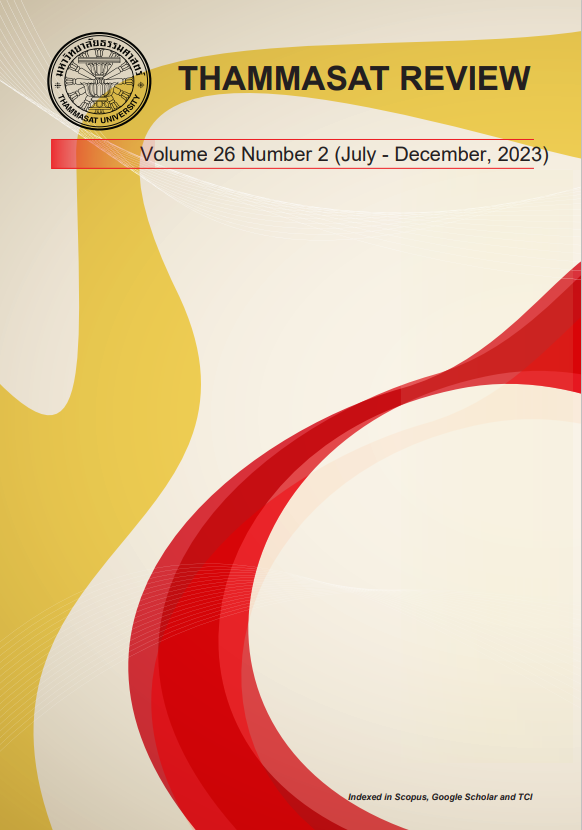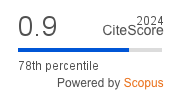The Social Impact Value Chain and Driving Factors of the Social Innovation Project to Promote the Social Solidarity Economy: A Study in the Pilot Area of Central Thailand
Keywords:
Social Innovation, Social Impact Value Chain, Social Solidarity EconomyAbstract
In this study the social impact value chain (SIVC) is utilized as a framework to portray and evaluate processes in social projects from their inception to completion. Focus centers on the overall process of 9 social innovation projects in a pilot area located in central Thailand. The objective is to answer research questions concerning how the components of the SIVC of these social innovation project’s function, and what factors drive them towards promoting a social solidarity economy. Data were collected from documents and in-depth interviews with key informants, including 9 project leaders and 27 beneficiaries, yielding 36 participants. The results of the SIVC analysis revealed 5 dimensions that significantly influenced the outcomes of the social innovation projects and their transformative effects at the initial stages: 1) health and safety; 2) income generation; 3) capacity building and community empowerment; 4) local cultural preservation; and 5) pollution reduction and environmental friendliness. These dimensions reflect the social impact in terms of social, economic, environmental, and cultural aspects. Additionally, the research findings indicate that there are important driving factors for social innovation projects to create a social solidarity economy, including psychological ownership, which includes: 1) ethical consciousness; 2) participation in investment and expenses; and 3) participation in developing of human-centered innovations. Businesses and organizations interested in social innovation should prioritize and implement these factors to create sustainable social impacts.
References
Abuzeinab, A., & Arif, M. (2014). Stakeholder engagement: A green business model indicator. Procedia Economics and Finance, 18, 505-512.
Allen, W., Cruz, J., & Warburton, B. (2017). How decision support systems can benefit from a Theory of Change approach. Environmental Management, 59, 956–965. https://doi.org/10.1007/s00267-017-0839-y
Brest, P. (2010). The power of theories of change. Stanford Social Innovation Review, 47-51.
Brow, M. (2020). Unpacking the Theory of Change. Stanford Social Innovation Review,
-50.
Chen, H. (1990). Theory-driven evaluations. Newbury Park, CA: Sage.
Chen, H. (1996). A comprehensive typology for program evaluation. Evaluation Practice, 17, 121-130.
Coryn, C., Noakes, L., Westine, C., & Schröter, D. (2011). A systematic review of theory-driven evaluation practice from 1990 to 2009. American Journal of Evaluation, 32(2), 199–226. https://doi.org/10.1177/1098214010389321
Csedő, Z., Magyari, J., & Zavarkó, M. (2022). Dynamic corporate governance, innovation, and sustainability: Post-COVID period. Sustainability, 14(6), 3189. https://doi.org/ 10.3390/su14063189
Diop, A., Al Ansari , M., Al Ali Mustafa, S., & Kien, L. (2020). Social capital and sense of neighbourhood belonging among Qatari nationals. British Journal of Middle Eastern Studies, 1-14.
Edyvean, R., Apiwatanapiwat, W., Vaithanomsat, P., Boondaeng, A., Janchai, P., & Sophonthammaphat, S. (2023). The bio-circular green economy model in Thailand-A comparative review. Agriculture and Natural Resources(57), 51-64. https://doi.org/ 10.34044/j.anres.2023.57.1.06
Elkington, J. (1997). Cannibals with Forks the Triple Bottom Line of 21st Century Business. Oxford: Capstone.
Epstein, M., & Yuthas, K. (2014). Measuring and improving social impacts. CA: Berrett-Koehler Publishers.
Grilo, R., & Moreira, A. (2022). The social as the heart of social innovation and social entrepreneurship: An emerging area or an old crossroads? International Journal of Innovation Studies, 6, 53-66. https://doi.org/10.1016/j.ijis.2022.03.001
Hölsgens, R. (2016). On the importance of power struggles in the diffusion of social innovations. European Public & Social Innovation Review, 1(2), 63-72. https://doi. org/ 10.31637/epsir.16-2.1
International Labour Organization. (2019). The contribution of the social and solidarity economy and social finance to the future of work. Geneva: International Labour Office.
International Labour Organization. (2022). Advancing the 2030 agenda through the social and solidarity economy. https://unsse.org/wp-content/uploads/2022/09/Advancing-the-2030-Agenda-through-the-Social-and-Solidarity-Economy-UNTFSSE-2022.pdf
Kelley, D. (2020). Human-centered design for collaborative innovation in knowledge-based economies. Technology Innovation Management Review, 10(9), 5-15.
Luecke, R., & Katz, R. (2003). Managing creativity and innovation. Boston: Harvard Business School Press.
Moulaert, F., MacCallum, D., Mehmood, A., & Hamdouch, A. (2013). The international handbook on social Innovation: Collective action, social learning and transdisciplinary research. Cheltenham: Edward Elgar Publishing Limited.
National Innovation Agency. (2020). Innovation diplomacy. Retrieved from https://www.nia.or. th/ความเป็นมา.html
NESDC. (2023). The thirteen national economic and social development plan (2023-2027). https://www.nesdc.go.th/download/Plan13/Doc/Plan13_Final.pdf
OECD. (2018). The future of education and skills education. https://www.oecd.org/education/ 2030/E2030%20Position%20Paper%20(05.04.2018).pdf
Portales, L. (2019). Social innovation and social entrepreneurship: Fundamental, concepts,
and tools. London: Palgrave Macmillan.
Photisita, C. (2019). Science and Art in Qualitative Research. Bangkok: Amarin Printing.
Prabawani, B., Hadi, S., Wahyudi, F., & Ainuddin, I. (2023). Drivers and initial pattern for corporate social innovation: From responsibility to sustainability. Heliyon, 9, 1-11.
Ramachandran, R. (2020). Stakeholder management and innovation. SSRN Electronic Journal, 1-17. http://dx.doi.org/10.2139/ssrn.3559471
Rao, D., & Kalyani, C. (2021). Design thinking: A human-centered approach towards innovation-a conceptual framework. international Journal of Marketing and Human Resource Management, 12(2), 59-65. https://doi.org/10.34218/IJMHRM.12.2.2021.006
Santoso, A. (2020). Impact of psychological ownership on innovation and growth in Indonesia business firms. International Journal of Psychosocial Rehabilitation, 24(7), 1002-1012.
Satalkina, L., & Steiner, G. (2022). Social innovation: A retrospective perspective. Minerva, 60(1), 567-591. https://doi.org/10.1007/s11024-022-09471-y
Schilling, J., & Kluge, A. (2008). Barriers to organizational learning: An integration of theory. International Journal of Management Reviews, 11(3), 337-360. https://doi.org/10. 1111/ j.1468-2370.2008.00242.x
Smith, D. (2010). Exploring innovation. London: McGraw-Hill Higher Education.
UNTFSSE. (2014). Social and solidarity economy and the challenge of sustainable development. https://unsse.org/2014/09/08/tfsse-position-paper-social-and-solidarity-economy-and-the-challenge-of-sustainable-development/
W.K. Kellogg Foundation. (2004). Logic model development guide. Battle Creek (MI): W.K. Kellogg Foundation.
Williams, E. (2022). Participatory budgeting—The ultimate way to co-create services for social innovation? Public Money & Management, 45(5), 304-305. https://doi.org/ 10.1080/09540962.2021.1981041
Zhou, W., Li, S., & Meng, X. (2022). Study on the effect of customer psychological ownership on value co-creation under service ecosystem. Sustainability, 1-16.
Downloads
Published
How to Cite
Issue
Section
License
Copyright (c) 2023 Thammasat Review

This work is licensed under a Creative Commons Attribution-NonCommercial-NoDerivatives 4.0 International License.
The opinions and ideas expressed in all submissions published in Thammasat Review are solely that of the author(s) and do not necessarily reflect that of the editors or the editorial board.
The copyright of all articles including all written content and illustrations belong to Thammasat Review. Any individuals or organisation wishing to publish, reproduce and distribute a particular manuscript must seek permission from the journal first.








